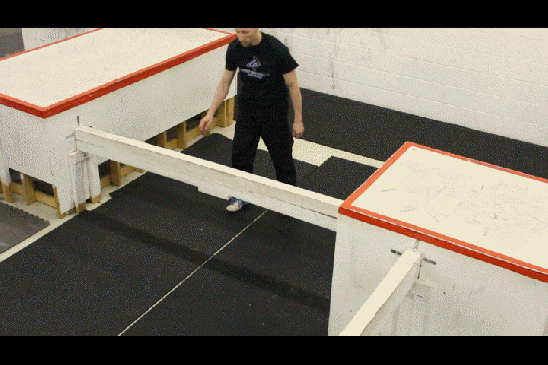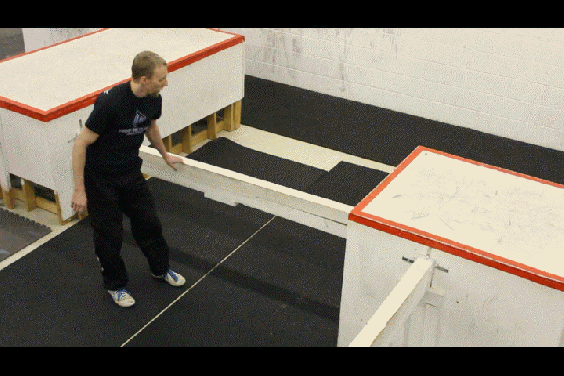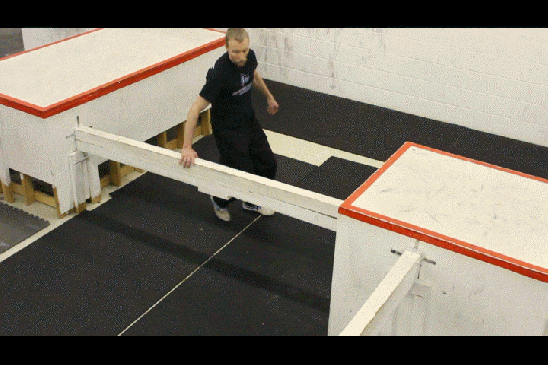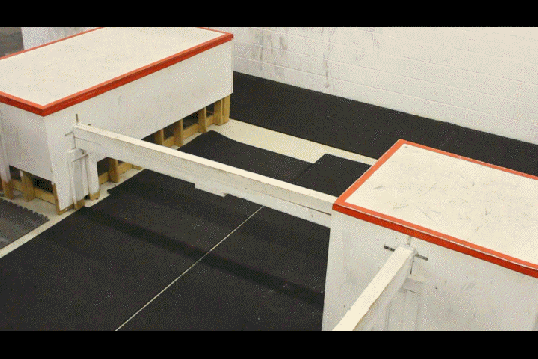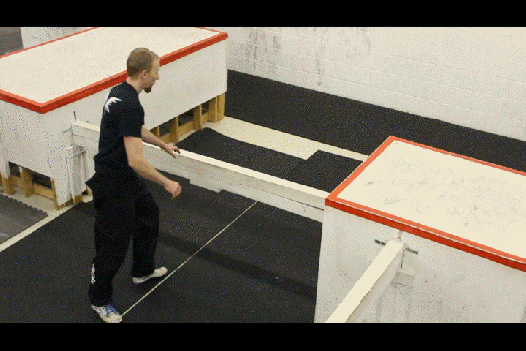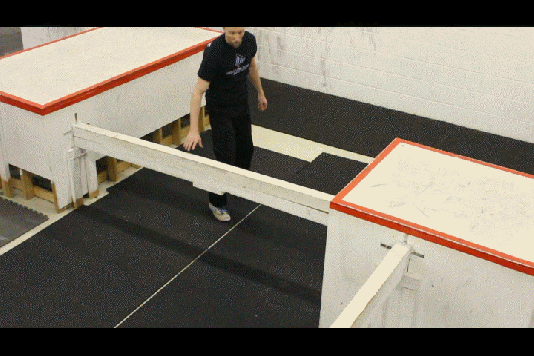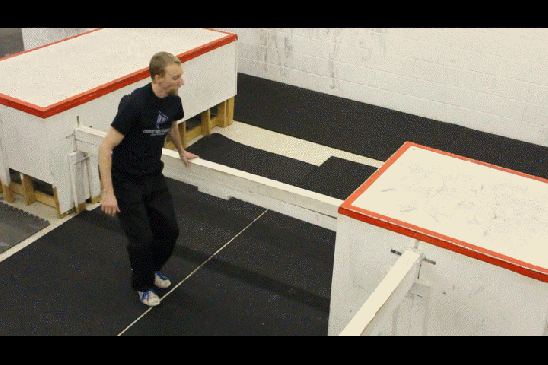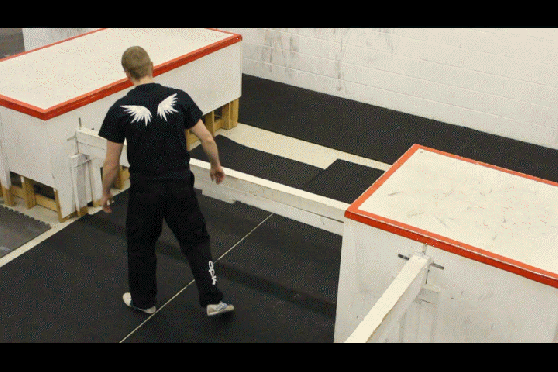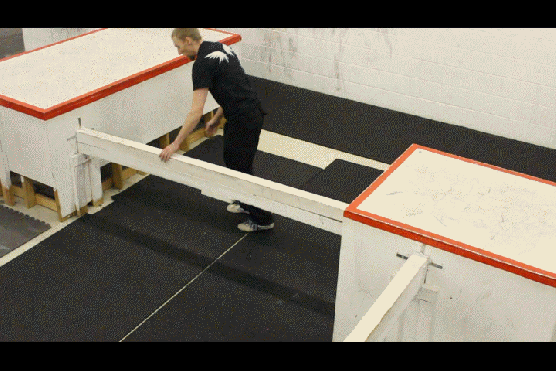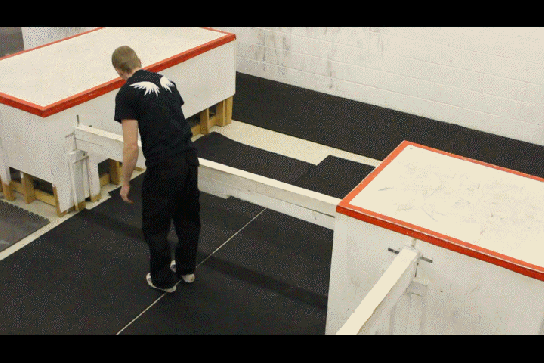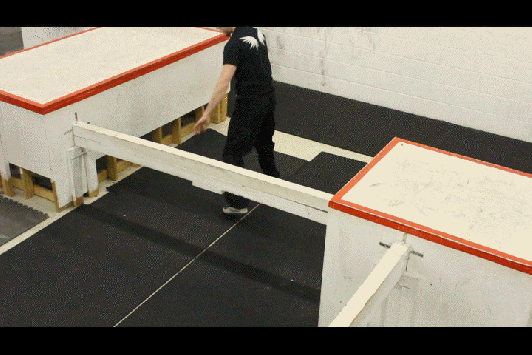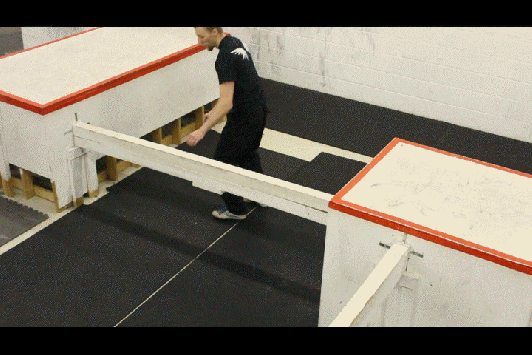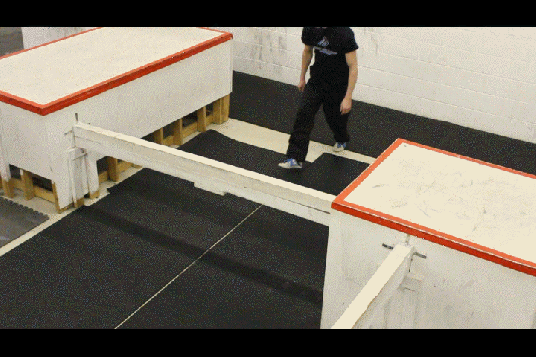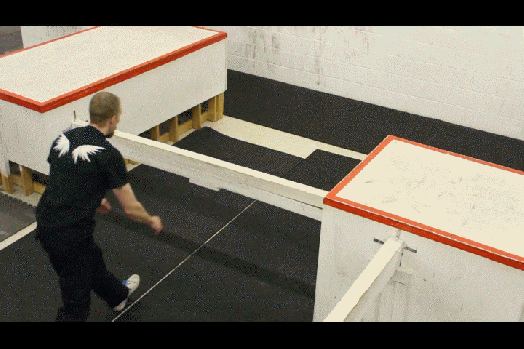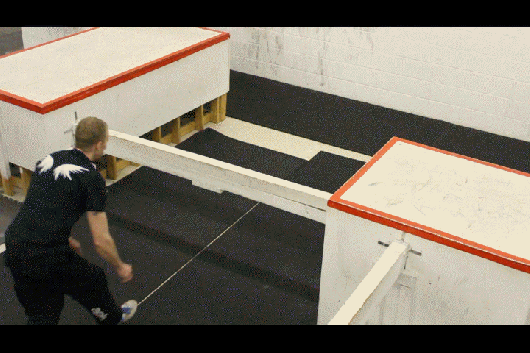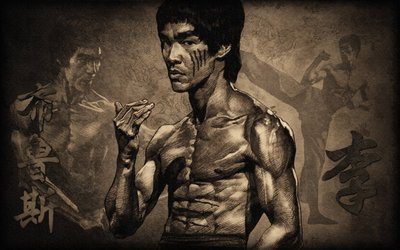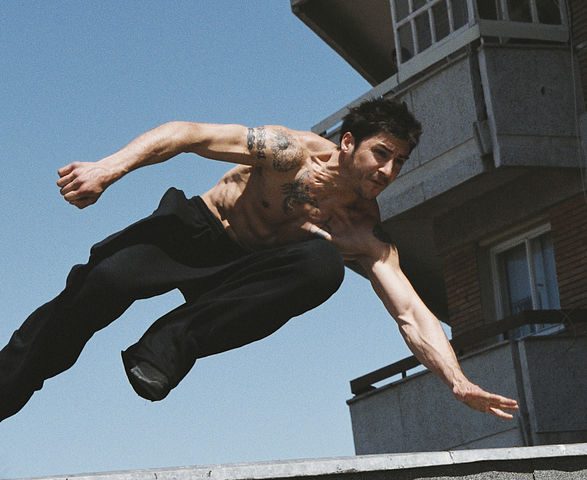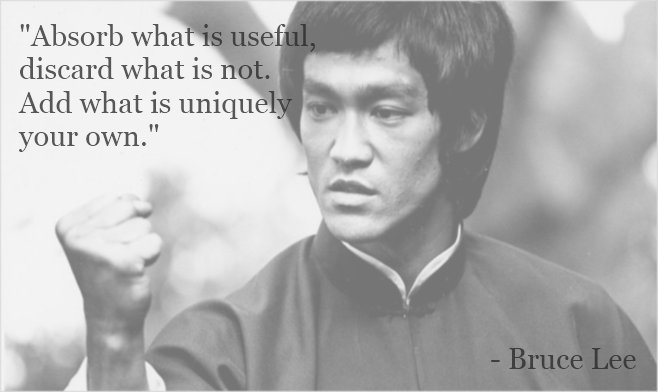Trapezoid/Vault Box Construction Guide
March 20, 2020 in Construction /by chadz
Depending on how big you want your parkour vault box, it will change the amount of wood you will need.
For a 3 foot tall vault box you will need:
- 6 8ft 2x4s
- Two sheets of ¾” 4’x8’ plywood
- 32 truss connector plates
- Construction grade polyurethane
- Bunch of nails or wood screws (T-25 star bit recommended)
Tools:
- Nail gun/hammer or power drill for screws
- Circular saw
- Caulking gun
- Power sander
- Pencil
Getting Started
Start by laying two 2x4s fat side down next to each other at equal and opposite angles.
Next, to find the cutting angle, lay two more 2x4s parallel to each other. This is where you will decide how tall and wide you want your parkour vault box to be.
First decide how wide you want the top to be. This will be measured from the outside of the top green 2×4.
How tall you want the vault box to be is decided by the lower green 2×4. As long as the two green 2x4s are parallel, the angles won’t change.
Using the 2x4s as a guide, mark cutting lines on the wood. Mark the RED lines on the pink 2×4 and the GREEN lines on the lime 2×4.
After the pieces are cut, they should fit together like this figure.
Next, attach the wood together with truss connector plates. Attach to the spot indicated by the orange. Put connector plates on both sides of your frame to have a total of eight plates per frame.
Once you have four frames completed, you can put them together. Using a 2×4, evenly space the frames so they are 12” on center (ie, measuring from the center of one board to the center of the other board) so the width is 4’ (a normal piece of plywood is 4’, less cutting).
Do this on all four angles inside the vault box so the finished product looks like that.
When you are assembling the vault box, try to make the frames as straight as possible. They should be 90 degrees to the ground.

HERE ARE A FEW PICTURES OF OUR VAULT BOX SKELETON FULLY ASSEMBLED:
Next comes the plywood. To attach the plywood you can either screw it or glue and nail it. We glued and nailed ours using construction grade polyurethane. This has so far worked wonderfully and was much faster than screwing.
NOTES ABOUT PLYWOOD:
Depending on the thickness of the plywood, you may have to pay attention to the grain. We used ½” plywood which consists of three layers. Because of this, you need to layer the grain perpendicular to your frame. If you use ¾” (recommended) then this shouldn’t be a problem.
Next, layering the plywood. The top piece should lay on top of the side pieces. This will help protect the sides of the plywood. If you’d like, you can sand the corners of the top piece so it is flush to the side. This, of course, is optional.
DING!

















